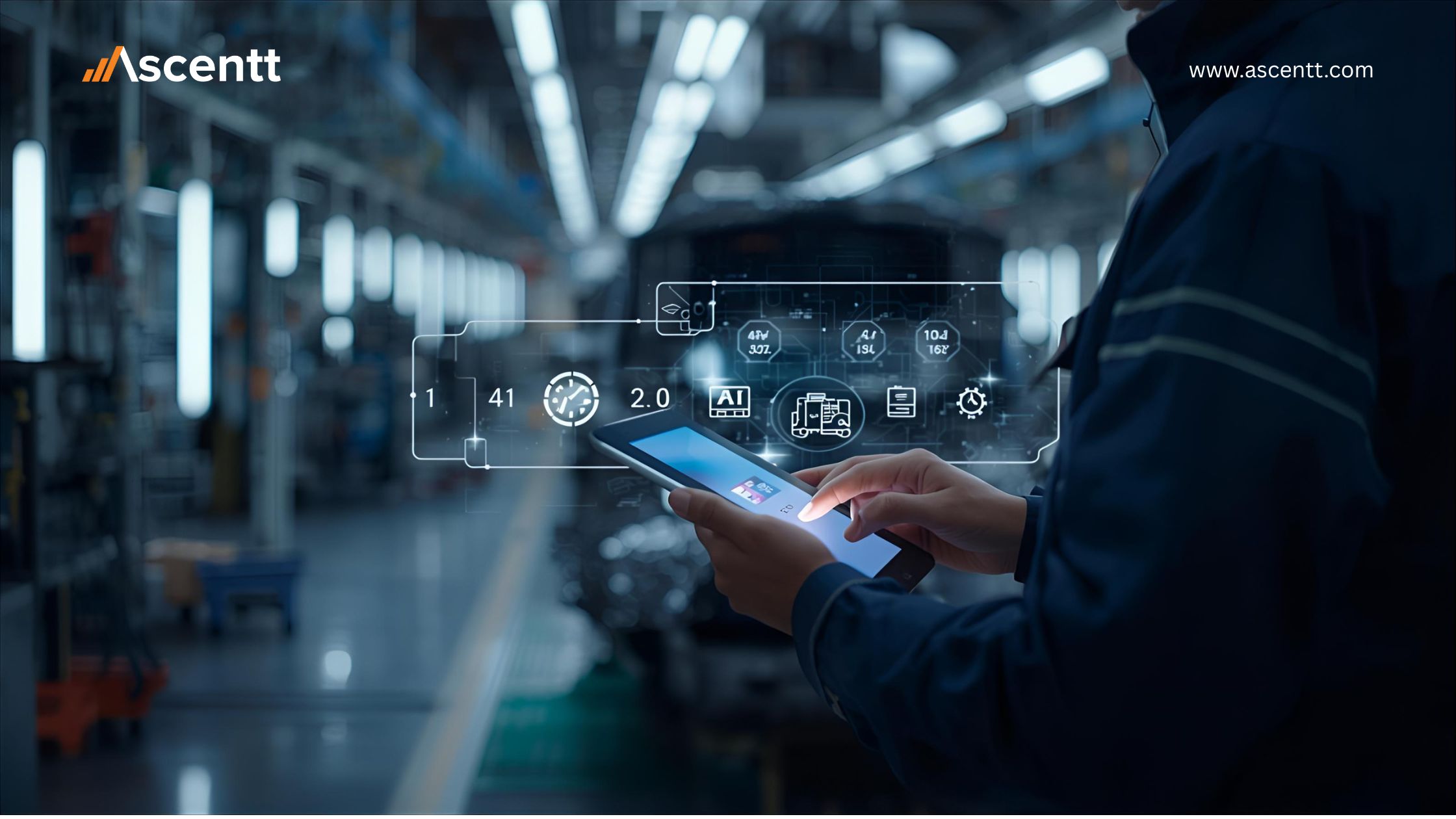In automotive engineering, digital transformation and mechanical design go hand in hand. Today’s vehicles carry a plethora of sensors that furnish an array of data, from engine diagnostics and location details to driving patterns and the component-status updates that are a regular part of the vehicular existence. With IoT modules incorporated and OBD-II ports made part of the standard setup, the contemporary vehicle essentially is a mobile data center.
For automotive enterprises, this data is a goldmine for predictive asset maintenance, a mission-critical strategy to:
- Preempt mechanical failures
- Reduce warranty claims
- Optimize supply chains
- Enhance driver safety
Unmanaged manufacturing data is a significant liability. This “data tsunami” causes massive financial drains, primarily through unplanned downtime, costing industrial manufacturers $50 billion annually. Manufacturers average 800 hours of equipment downtime each year (over 15 hours weekly), with an automotive production line stoppage costing $22,000 per minute. Even scheduled shutdowns consume 1-10% of production time, and undiagnosed vehicle issues lead to costly recalls. (Forbes)
The challenge? Extracting value from the data tsunami.
The Problem – Infrastructure Drowning in Automotive Data
A global automotive OEM faced severe operational bottlenecks. Their fleet generated gigabytes of telemetry per vehicle hourly, overwhelming the cloud infrastructure. Core challenges included:
- Unsustainable Costs
- Raw data ingestion and storage consumed massive compute resources, inflating cloud expenses.
- Redundant/low-value signals (e.g., routine environmental readings) cluttered pipelines.
- Latency-Induced Blind Spots
- Batch processing delayed analytics by hours, making real-time interventions (e.g., engine fault alerts) impossible.
- Inflexible Scaling
- Legacy systems buckled under seasonal spikes (e.g., holiday travel surges).
- Lost Engineering Insights
- Critical patterns (e.g., transmission wear precursors) were buried in noisy data streams.
Ascentt’s Vertical AI Solution – Automotive Intelligence by Design
Generic horizontal AI tools failed to decode automotive-specific data:
- Complex nested schemas (e.g., CAN bus signals with 1000+ parameters)
- Physics-driven telemetry (e.g., vibration frequencies indicating bearing wear)
- Safety-critical context (e.g., brake system anomalies)
Phase 1: Automotive-Native Data Pipelines
- Replaced Generic Spark Jobs: Engineered distributed processing workflows using automotive-optimized data structures that understood:
- Hierarchical sensor relationships (e.g., powertrain subsystem dependencies)
- Time-series patterns (e.g., RPM fluctuations vs. temperature thresholds)
- Intelligent Data Filtering:
- Edge-based agents prioritized high-value signals (e.g., oil pressure drops > tire pressure)
- Suppressed redundant/low-impact data at source
Phase 2: Tiered Intelligence Architecture
Layer | Function | Domain-Specific Innovation |
Edge | On-vehicle data filtering | Context-aware signal prioritization |
Streaming | Real-time processing (<100ms latency) | Automotive FFT algorithms for vibration analysis |
Analytics | ML-driven health scoring & failure prediction | Warranty claim patterns fused with telemetry |
Phase 3: Workflow Integration
APIs fed processed insights directly into:
- Factory maintenance schedules
- Dealer service dashboards
- Warranty analytics engines
Results – Transforming Data Overload into Strategic Advantage
Original Problem | Ascentt’s Solution | Verifiable Outcome |
Slow processing causing latency | Automotive-optimized Spark jobs | 75% faster processing |
Exploding cloud compute costs | Domain-specific data filtering | 40x cost reduction |
Inability to support real-time use | Stream-native architecture | Operational real-time streaming |
The transformation exemplifies how Vertical AI’s domain specificity outperforms horizontal solutions: where generic tools saw unstructured data bloat, our automotive-native approach saw actionable signal patterns.
Summing Up
This success story validates a critical industry axiom: Without domain context, data is noise. Horizontal AI fails against automotive data’s complexity—multi-layered schemas, real-time physics, and safety imperatives.
Ascentt’s Vertical AI triumphed by:
- Embedding automotive expertise into data structures and algorithms.
- Aligning technology with engineering workflows (not vice versa).
- Focusing on ROI-first use cases (cost reduction → predictive capabilities).
The result isn’t just faster analytics, it’s a fundamental shift in how automakers leverage data for competitive advantage.
Transform Your Data Into Decisions With Ascentt
Ascentt builds cutting-edge Vertical AI solutions for global automotive and manufacturing leaders. We specialize in turning complex data into real-time decisions—powered by domain-specific AI agents.
Why partner with us?
- Industry-Tailored AI: Solutions designed for automotive data physics, workflows, and ROI targets.
- Fortune 500 Proven: Deployed in production environments at scale.
- End-to-End Ownership: From architecture design to ongoing MLOps support.
Contact Ascentt today to unlock the hidden value in your connected vehicle or manufacturing data. Let’s engineer the future of industrial intelligence—together.



